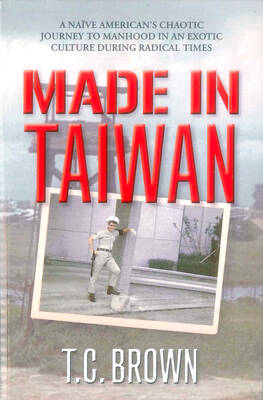The bouncy rhythm, the delicate music arrangement and good musicianship have made Harmonious Wail, one of the few outstanding bands that combines Eastern European folk songs and American jazz music.
For those who missed their first Taiwan concert in Chiayi yesterday, try to catch up with one of the six other concerts during their Taiwan tour.
Their upcoming gigs are Oct 1 in Yuanlin, Changhua county, Oct 3 in Taipei's National Concert Hall, Oct 5 in Taichung, Oct 6 in Chungli, Taoyuan county, Oct 7 in Kaohsiung and Oct 8 in Hsinchu.
Established in 1987, Harmonious Wail inlcudes mandolin, acoustic guitar, double bass, occasional fiddler and a female vocal. Its music owes a debt to musicians such as Django Reinhardt, Stephane Grappelli, and David Grisman.
Harmonious Wail founder and leader Sims Delaney-Potthoff said, "It's Jethro Burns' fault," when asked about the style of the band's mandolin-heavy gypsy-jazz.
For seven years, Sims studied with Burns, the legendary jazz mandolinist, laying the foundation for Harmonious Wail's acoustic string sound. He studied at Boston's Berklee College of Music, honing his skills while immersing himself in "gypsy" music.
Vocalist Maggie Delaney-Potthoff is a captivating performer. Equally at home scat-singing over a bebop tune, soaring on a solo, or blending with Wail's tight vocal harmonies, she delivers both powerhouse tunes and ballads with confidence and ease. Her well-received tunes include I'm always Chasing Rainbows, After You've Gone.
As a strings-based band, the guitarist Tom Waselchuk and bassist John Mesoloras are vital to the band's music. Waselchuck has performed with and led jazz groups such as Full Count Jazz Band, Wholly Cats, and played folk and blues and western swing.
Mesoloras has a powerful, rock steady and energetic stand-up bass playing style and is a perfect match for Sims Delaney-Potthoff's mandolin. Together, the band has a unique aura that brings the audience back to the scene of Paris jazz clubs of the 1930s.

During the Metal Ages, prior to the arrival of the Dutch and Chinese, a great shift took place in indigenous material culture. Glass and agate beads, introduced after 400BC, completely replaced Taiwanese nephrite (jade) as the ornamental materials of choice, anthropologist Liu Jiun-Yu (劉俊昱) of the University of Washington wrote in a 2023 article. He added of the island’s modern indigenous peoples: “They are the descendants of prehistoric Formosans but have no nephrite-using cultures.” Moderns squint at that dynamic era of trade and cultural change through the mutually supporting lenses of later settler-colonialism and imperial power, which treated the indigenous as

By 1971, heroin and opium use among US troops fighting in Vietnam had reached epidemic proportions, with 42 percent of American servicemen saying they’d tried opioids at least once and around 20 percent claiming some level of addiction, according to the US Department of Defense. Though heroin use by US troops has been little discussed in the context of Taiwan, these and other drugs — produced in part by rogue Chinese Nationalist Party (KMT) armies then in Thailand and Myanmar — also spread to US military bases on the island, where soldiers were often stoned or high. American military policeman

The Venice Film Festival kicked off with the world premiere of Paolo Sorrentino’s La Grazia Wednesday night on the Lido. The opening ceremony of the festival also saw Francis Ford Coppola presenting filmmaker Werner Herzog with a lifetime achievement prize. The 82nd edition of the glamorous international film festival is playing host to many Hollywood stars, including George Clooney, Julia Roberts and Dwayne Johnson, and famed auteurs, from Guillermo del Toro to Kathryn Bigelow, who all have films debuting over the next 10 days. The conflict in Gaza has also already been an everpresent topic both outside the festival’s walls, where

An attempt to promote friendship between Japan and countries in Africa has transformed into a xenophobic row about migration after inaccurate media reports suggested the scheme would lead to a “flood of immigrants.” The controversy erupted after the Japan International Cooperation Agency, or JICA, said this month it had designated four Japanese cities as “Africa hometowns” for partner countries in Africa: Mozambique, Nigeria, Ghana and Tanzania. The program, announced at the end of an international conference on African development in Yokohama, will involve personnel exchanges and events to foster closer ties between the four regional Japanese cities — Imabari, Kisarazu, Sanjo and